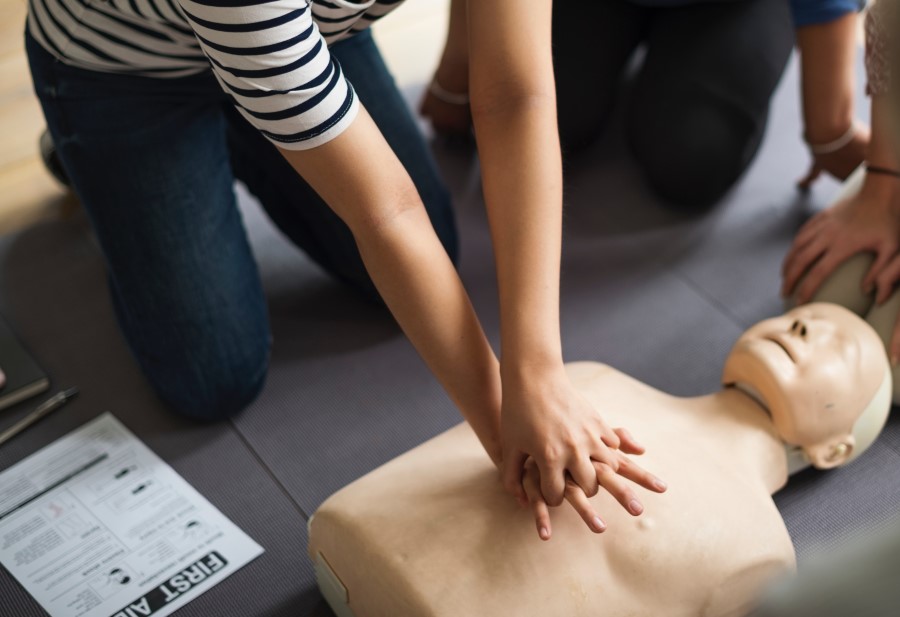Cardiac arrest is one of the most dangerous things anyone can experience and almost 366,000 people (in the U.S.) have a cardiac arrest episode outside the hospital every year. The good news is, CPR can help save lives and that’s exactly what happened to one teenage girl in Ohio. Without CPR, her outcome would more than likely have been fatal.
After finishing her chores, Sydney Ridlehoover insisted that her parents take her to the mall. Eventually she convinced them but they didn’t know that the trip would spell disaster.
Sydney’s stepfather, Peter Hubby, and her mother, Tracy Elsinger, took Sydney and her friend to a nearby mall (which was outside Columbus, Ohio). When they reached the mall, both girls quickly got out of the car and walked to the mall, talking and laughing.
Just after a few minutes, Sydney suddenly fell on the ground. Her stepfather thought that she got tripped or might be goofing around, but when she didn’t get up then her parent realized that something is wrong.
They ran towards her and saw her lying on the ground. She was making very strange breathing sounds as well as shaking too. Her mother assumed that she was having a seizure. She started screaming for help and her stepfather called 911 immediately.
Luckily, there was a respiratory therapist nearby. She heard the help cry and immediately responded. At her first glance, she recognized that Sydney was in cardiac arrest. Without wasting time, she began CPR. An EMT (off-duty) was also nearby and heard the help cry as well. He also joined the rescue effort. A mall security officer also joined in. The off-duty EMT asked the mall security officer for an automated external defibrillator.
The security officer quickly brought the AED from his truck. Through AED, the off-duty EMT read a shockable rhythm and also delivered many electrical jolts. This was done to stop the irregular heartbeat that caused Sydney to go through cardiac arrest.
At last, the ambulance arrived.
Sydney rested for two days so that her brain gets some rest. This was done because doctors weren’t able to figure out what thing might have caused her cardiac arrest.
When Sydney woke up, she was acting very strange. Few questions were asked from her and she didn’t answer correctly.
Doctors concluded that it could take more than a couple of days to clear her fogginess and it did happen. The real question was why a 13-year-old go into cardiac arrest?
Testing was done and the result showed a gene mutation – the one she and her mother had in common – that doctors think that it might be connected to cardiac arrest. To ensure protection, the family not only brought AED but also went through CPR training.
For more details visit https://www.heart.org/en/news/2019/04/16/teens-mall-trip-could-have-been-her-last-but-cpr-and-an-aed-saved-the-day


